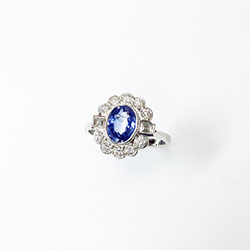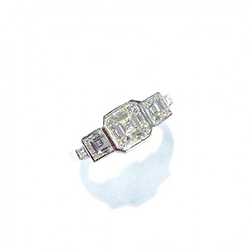The Tradition of the Engagement Ring
As we all know, engagement rings are given as a symbol of commitment to another person; a token given out of love. We’re going to take a look into some of the traditions surrounding engagement rings, some of which have been honoured for centuries.
Why do we give engagement rings?
The history of engagement rings is a long one. It’s believed that the tradition of giving a band as a sign of love dates back to the cavemen. They would tie a cord around their chosen other’s wrist, ankle or waist. Their approach isn’t exactly the same as ours, but it’s interesting that we’ve always felt the need to use physical signifiers to show we are committed to another.
In 1477, Archduke Maximilian of Austria proposed to Mary of Burgundy with a ring that had diamonds set in the shape of an ‘M’. This is the first recorded use of a diamond engagement ring which acted as a catalyst for the future.
In the 1890s, affordable diamond engagement and wedding rings could be purchased from mail order catalogues such as Sears & Roebuck. This meant that all women would have an engagement ring if they wanted; no one was excluded from the tradition.
With the growing interest in diamond mining and diamond set jewellery in the late 19th century, diamond engagement rings were growing steadily in popularity.
By the 1940s, engagement rings were the most in-demand piece of jewellery in most department stores. The popularity of the engagement ring skyrocketed, with marketers portraying the trinket as a necessity when embarking on your nuptials.
Why don’t men traditionally wear engagement rings?
 In the 1920s, manufacturers and jewellers attempted to launch engagement rings for men, but this did not take off. While the reason isn’t clear, here are a few possibilities:
In the 1920s, manufacturers and jewellers attempted to launch engagement rings for men, but this did not take off. While the reason isn’t clear, here are a few possibilities:
The way advertisement was conducted: companies tended to focus their efforts on attracting women to diamond jewellery, like engagement rings.
Men were never the target market. Their role was to purchase the diamond jewellery their significant other desired.
When companies did try to launch engagement rings for men, the traditions were already too ingrained.
Today, it is more common to find tasteful diamond rings for men, and the tradition of the engagement ring is not solely exclusive to women.
Why do we have a ‘ring finger’?

Circa 2800 BC, Egyptians were buried wearing a silver or gold ring made of wire on the third or fourth finger of their left hand. They believed it connected directly to the heart via the vena amoris (‘vein of love’). Later, Romans adopted this tradition but chose to wear their rings on the fourth finger of the left hand. They too believed in this vein of love. Even though science later proved the vein on the fourth finger is no different from the others, wearing an engagement ring on the fourth finger became the established tradition in many cultures.
Looking for engagement ring inspiration?
Western engagement ring traditions are centuries old, but the rings themselves have evolved over the years. Nowadays, the design and look of an engagement ring can vary to suit the wearer.
Picking the right ring is important, so why not get some inspiration from our website, or pop into our Margate branch for more information?





